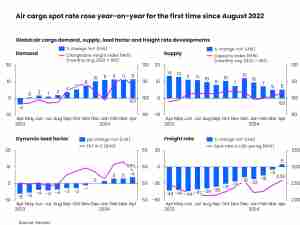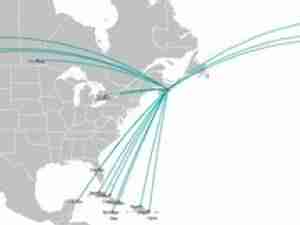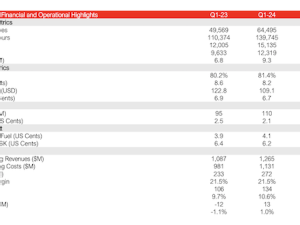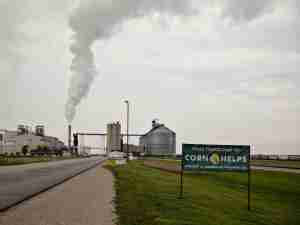The recent Lion Air crash instance in Jakarta, has created a sense of fear among people in choosing air travel for transport. The incident is quite similar to the 1985 Japan Airlines crash and the mysterious disappearance of the Malaysia Airlines Flight 370. Such incidences have raised concerns about the safety of the manufactured aircrafts.
Also, many unreported air accidents have led to the need for regular maintenance of airplanes by aerospace authorities. In consequence, this has created profitable growth opportunities for aerospace maintenance chemicals industry players.
Aircrafts are used on a large scale in military activities, however, their use in the civilian domain has become more prominent in last couple of decades. The rising demand for air travel owing to its convenience and lesser time has led to an increase in air traffic. As per the International Civil Aviation Organization, 2018 had witnessed over 4.3 billion air departures – an increase of around 38 million from the previous year. This would of course, demand increased maintenance of these
Inorganic chemicals – the product of choice for aircraft maintenance
Aircraft maintenance requires deep focus and consistency to ensure safe and secure operations. The older airplanes are not the only ones that call for repair and regular monitoring. In recent times, the newly built aircrafts also need routine checks before being allowed to transport passengers.
An aircraft maintenance is a rather long procedure. It involves the usage of various products such as cleaning chemicals, paint strippers, wash & polish products, leather cleaners, paint removers, degreasers, solvent, etc. These products, composed of inorganic and organic chemicals, are used based on their suitability to the application, reliability, and environment friendliness.
Since inorganic chemicals possess high chemical compatibility, they are the obvious product of choice for airplane maintenance. Inorganic compounds also have specific electric conductivity and high melting points, both of which deem them suitable to be used for paints, coatings, and pigment applications for aircrafts and other vehicles. Since they efficiently help maintain different aircraft devices, aerospace maintenance chemicals industry may gain appreciable proceeds from inorganic chemical segment.
KEMSTRIP 600 – Aerospace maintenance chemical manufacturers taking the sustainable approach
Removing older paints from aircraft interiors is an important part of maintenance, for which aviation companies use paint strippers and similar products. In recent times, they are attempting to use eco-friendly chemicals, considering the impact of carbon emissions on the environment. In this respect, the product KEMSTRIP 600 holds a lot of importance in the global aerospace maintenance market. Developed by Socomore, KEMSTRIP 600 is said to be one of the finest eco-friendly chemicals.
So what makes KEMSTRIP 600 an ideal chemical choice for the aircraft maintenance operation?
The makers claim that it is often used as a descaling agent for removing many layers of paint in the aircraft body, as it is efficient on alkyde-urethanes, acrylics, polyurethanes, alkyddes, and epoxies. Also, KEMSTRIP 600 is free of chlorinated or any other aromatic solvents, hydrocarbons, and phenols and has no threat to the environment.
Socomore’s KEMSTRIP 600 is an example that most aerospace maintenance chemical manufacturers are looking to emulate. The rising acceptance of these chemicals is likely to bring about an increase in aerospace maintenance chemicals market size over the coming years.
Industry contenders are also experimenting with innovation to devise novel chemicals for aerospace maintenance. A name that immediately comes up in this context is Henkel Adhesives.
The company, with approximately 50 years of experience, is a leader in the structural adhesives and surface treatments for the aircraft OEMs and MRO industries. Henkel promises to offer solutions to every menial aircraft problem. The company is also investing in research and development activities to bring about new products similar to its range of BONDERITE and LOCTITE.
Henkel’s BONDERITE® portfolio comprises clean surface treatment coating & lubricant materials and delivers high operational efficiency. LOCTITE® on the other hand, is a trusted brand for sealants and adhesives in industrial manufacturing.
Despite various benefits offered by chemicals for aircraft maintenance, its side effects on human and environmental health are posing as a major constraint for manufacturers. Aircraft maintenance workers are sometimes exposed to trichloroethylene and other hydrocarbons which are leading to an increase in global mortality rates. On these grounds, they are making efforts to develop a complete, full-fledged range of eco-friendly chemicals. Experts claim that in the coming years, sustainability may majorly drive aerospace maintenance chemicals market trends.
Source: https://www.gminsights.com/industry-analysis/aerospace-maintenance-chemical-market










